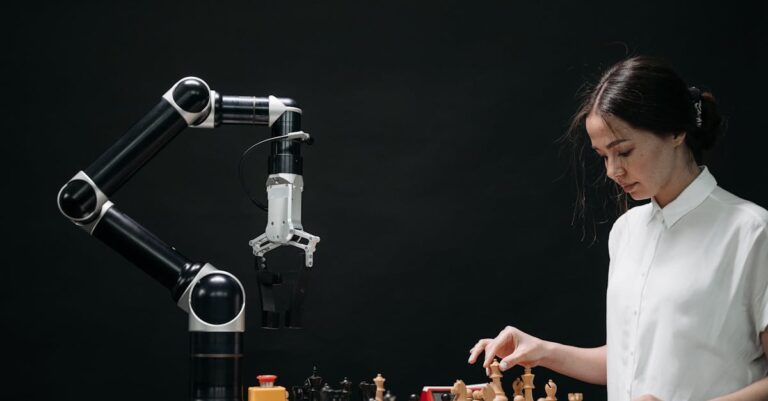
## The Cartographer’s Shadow
The rain tasted like rust. Elias wiped a grimy hand across his face, the city blurring behind the downpour. He’s been sketching for hours, hunched beneath a leaky awning on Bleecker Street, trying to capture the impossible angles of it. The lighthouse.
It wasn’t real. Not in any map he’s ever seen, no official register. Yet, every few weeks, it appeared—a sudden apparition of stark white stone and impossible geometry reflecting in the Hudson. He calls them “shimmers.” No one else sees them, or if they do, dismisses it as a trick of the light. But Elias, a sculptor by trade and an observer by nature, knew better.
“Another one?” A voice rasped beside him. Old Man Hemlock—a street vendor who sold hot dogs and traded in whispers about forgotten corners of the city.
“A strong one tonight,” Elias replied, not looking up from his charcoal sketch. “The angles are… sharper.”
Hemlock grunted, flipped a hot dog, the sizzle a counterpoint to the drumming rain. “You chasing ghosts again, kid?”
“Something like that.” Elias tightened his grip on the charcoal, translating the ephemeral vision onto paper. He’s filling notebooks with these sketches—a growing archive of the impossible lighthouse.
He’s been ignoring gallery invitations, sidelining commissions. His studio is overflowing with clay and wire sculptures—abstract forms that somehow, when viewed at certain angles, mimic the lighthouse’s elusive structure. He doesn’t understand it, just feels compelled to build it—or at least, a shadow of it.
A sharp click echoed from across the street. A man in a dark suit, face obscured by a fedora, watched him intently. He’s been appearing more and more often lately—a silent sentinel observing Elias’s obsession.
“They don’t like you digging around, you know,” Hemlock muttered, handing Elias a greasy hot dog. “Some things are better left buried.”
Elias chewed slowly, the taste of processed meat and cheap mustard a stark contrast to the clean lines he was trying to replicate. “What things?”
“Company secrets, kid. Deep ones.” Hemlock shrugged, wiping his hands on a stained apron. “The kind that can make people disappear.”
The man in the suit moved, crossing the street with a disconcerting grace. He stopped a few feet away, offering no introduction.
“Your work is… intriguing,” he stated, voice smooth and devoid of warmth.
Elias raised an eyebrow, returning to his sketchpad. “Appreciate the compliment.”
“We represent a… preservation organization,” he continued, ignoring Elias’s nonchalance. “Dedicated to documenting historical artifacts.”
“And you think my sculptures qualify?” Elias asked, a wry smile playing on his lips. “They’re based on something that doesn’t exist.”
“On the contrary, Mr. Thorne,” the man countered, producing a slim card—a corporate logo: “Chronos Archives.” “Your work aligns with our research.” He paused. “We’d like to offer you a… partnership.”
A partnership? With a company that archives historical records? It sounds too good to be true. Or possibly, dangerous.
He returned to his sketchpad, studying the lines with a critical eye. He sees something he hadn’t noticed before—a series of tiny, almost invisible symbols etched into the stone of one of his sculptures. He traced them with a calloused finger. They resemble fragments of letters, but arranged in a complex, unfamiliar pattern.
“What are those?” the man asked, his gaze fixed on Elias’s finger.
Elias looked up, a sudden chill crawling down his spine. “I found them in the clay. I didn’t put them there.”
“May we see your notes? Your sketches?” The man’s voice was no longer polite; it held a subtle edge of demand.
He hesitated, then handed over his sketchbook. The man flipped through the pages with a practiced efficiency, stopping at a sketch of the lighthouse – the strongest shimmer he’s ever recorded. He pointed to one particular detail—a series of interlocking geometric shapes at the top of the structure.
“These patterns… they match a cipher we’re researching,” he stated, voice tight with suppressed excitement. “A maritime cipher developed in the late 18th century.”
The man named Reed, introduced himself formally. He explained that Chronos Archives was contracted by a consortium of wealthy families to preserve records pertaining to their ancestral histories. They had stumbled upon references to the cipher—a coded communication system used by a network of private shipping companies operating along the Eastern Seaboard.
“The cipher relates to the charting and control of a series of strategic waterways,” Reed continued, “and ultimately, impacting coastal boundaries.”
Elias feels a prickling sensation on his skin. It all aligns too perfectly—his sculptures, the shimmering lighthouse, the cryptic symbols. He feels like a pawn in some grand historical game.
He spends weeks inside Chronos Archives, poring over dusty documents, faded maps, and brittle letters. The records are fragmented, incomplete, but a picture slowly emerges – a shadowy world of secret trade routes, illicit contracts, and manipulated charts. The cipher was used to conceal the true locations of valuable fishing grounds and vital shipping lanes—information that gave a select few families an enormous advantage.
The lighthouse, it turns out, wasn’t just a structure; it was an observation post—a strategically placed beacon used to monitor maritime traffic and transmit coded messages. Its unexpected appearances in his sculptures are not coincidences. They’re echoes of a forgotten history, imprinted on him somehow—a psychic resonance triggered by his artistic process.
“The coastlines have shifted, you see,” Reed explains, pointing to a series of antiquated maps. “Due to natural erosion and deliberate manipulation of navigational charts. The original boundaries, the ones reflected in your sculptures—they were deemed inaccurate by powerful families who wanted to expand their claims.”
The discrepancies in the charts—errors that cost lives and fortunes—were not accidents. They were calculated maneuvers designed to enrich a select few at the expense of everyone else.
Elias discovers that his own family name—Thorne—appears frequently in the records. His great-great-grandfather, a cartographer employed by one of those wealthy families, was involved in the chart manipulation. But he also left behind a hidden journal—a confession of his guilt and a warning about the consequences.
The journal contained a map, far more accurate than any official chart—a map that revealed the true location of vital waterways and challenged the established coastal boundaries. But it was a dangerous map—one that threatened to expose centuries of deception.
“Your family knew about the cipher,” Reed stated, handing Elias a translated excerpt from his great-great-grandfather’s journal. “They tried to warn others.”
The man standing across from him isn’t Reed anymore, but a different man with the same suit and demeanor. He introduces himself as Mr. Silas, chief custodian of Chronos Archives—and a descendant of one of the families directly benefiting from the manipulated charts.
“Your art is… disruptive,” Silas says, his voice hard as granite. “It’s drawing unwanted attention to our efforts.”
Elias realizes he’s been a pawn, unwittingly resurrecting a history that powerful people want to keep buried. His sculptures are not just echoes of the past; they’re a threat to the present.
“You want me to stop,” Elias states, his voice steady despite the tremor in his hands.
Silas smiles, a cold, predatory expression. “We’re just asking you to be… discreet.”
Elias thinks of his family’s hidden history, the generations who struggled with the guilt and secrets passed down through their lineage. He thinks of the injustice, the lost lives, the distorted maps that shaped a nation’s destiny.
He returns to his studio, clay on his hands and determination in his eyes. He doesn’t stop building. Instead, he transforms his sculptures—incorporating the same coded symbols from his great-great-grandfather’s journal. He creates a series of large-scale installations—powerful statements that challenge the established narratives and expose the truth. He’s not just replicating the lighthouse; he’s dismantling it—piece by piece, symbol by symbol.
He exhibits his work in an abandoned warehouse on the waterfront—a defiant act of artistic rebellion that draws a crowd. Journalists, historians, and ordinary citizens—all drawn by the mystery and intrigue of Elias Thorne’s sculptures. The news spreads like wildfire.
Silas sends thugs to destroy the exhibit, but Elias is waiting for them—a small army of supporters ready to defend his art and the truth it reveals. The confrontation ends in a stalemate—a public spectacle that exposes Chronos Archives and its shadowy clients.
The legal battles are long and arduous, but the evidence is overwhelming. The manipulated charts are discredited. The coastal boundaries are redrawn—restoring justice to generations of victims. Chronos Archives is exposed as a front for corporate espionage and historical manipulation.
Elias Thorne doesn’t seek fame or fortune. He just wants to set the record straight—to honor his family’s hidden past and ensure that history is never again distorted for personal gain. He continues to sculpt—creating art that celebrates truth, exposes injustice, and inspires hope in a world desperately seeking clarity.
The rain falls on the city again as Elias stands before his latest sculpture—a reimagined lighthouse, its geometric angles softened by the light. He smiles, a quiet sense of satisfaction settling in his heart. The echoes have been heard. The truth has emerged.


